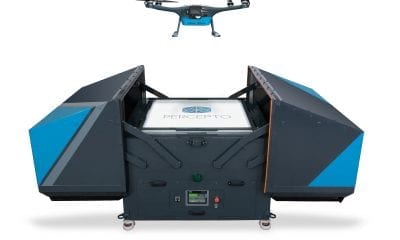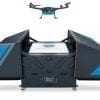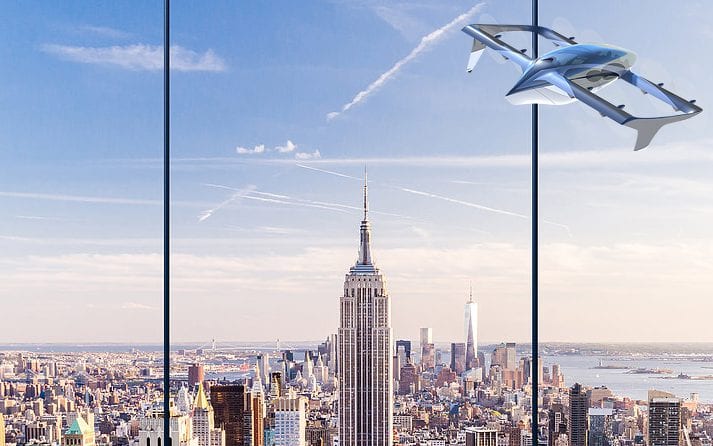
Autonomous
This Aussie Startup’s VTOL Air Taxi Could Be Telstra’s Entry Into Pilotless Aircraft
This Aussie Startup’s VTOL Air Taxi Could Be Telstra’s Entry Into Pilotless Aircraft
An Australian startup hopes to slash commuter times by a developing a pilotless electric plane that can take off and land vertically, much like a helicopter, and then fly forwards as would a traditional airplane.
The unmanned aircraft, originally called the ‘Verti-plane’ but now known as ‘Vertiia’, could even save lives by allowing traffic jams to be avoided in emergency situations, and is being backed by Australian telecommunications company Telstra’s as part of their muru-D startup accelerator program.
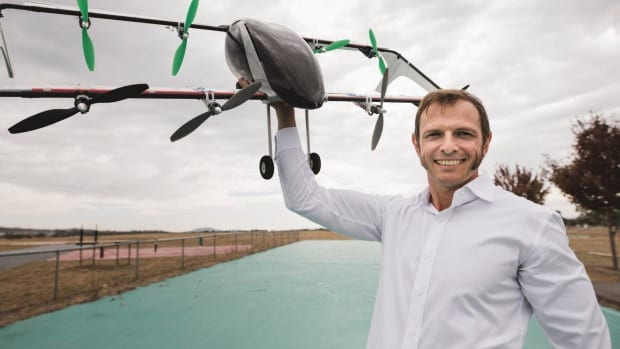
Co-founder of AMSL Aero, Andrew Moore, with a prototype Vertiia, developed with funding from Telstra’s muru-D accelerator | Jamila Toderas
The company, AMSL Aero, was co-founded by Andrew Moore, an aeronautical engineer whose career began in the Australian Navy. He sees great potential in the market for pilotless VTOL aircraft.
“The electric VTOL (vertical take-off and landing) aircraft market is forecast to exceed the value of the current USD $27 billion global helicopter market by 2032 and our technology is leading the way,” Mr Moore said in a press release.
“The Verti-plane uses patented technology that tilts the two wings to enable vertical flight for take-off and landing, and horizontal flight for fast (300km/hr) cruising flight. It flies autonomously and is electric, which means it is far safer than helicopters, and is also quiet and emissions free.
The six-month muru-D accelerator program which commenced this February, has so far provided Moore with seed funding of $75,000, which he has put to good use creating a 1:5 model of the aircraft he plans to develop further. Moore brings with him to the project over 20 years experience in helicopter and aircraft design projects, and a passion for piloting aircraft which he inherited from his naval pilot father. Moore is also a pilot himself.
With the support of the mentorship and investment input of the muru-D project, Moore’s 2-seater “Vertiia” could be the start of something big, with applications from daily personal transport to supporting defence, disaster and medical response.
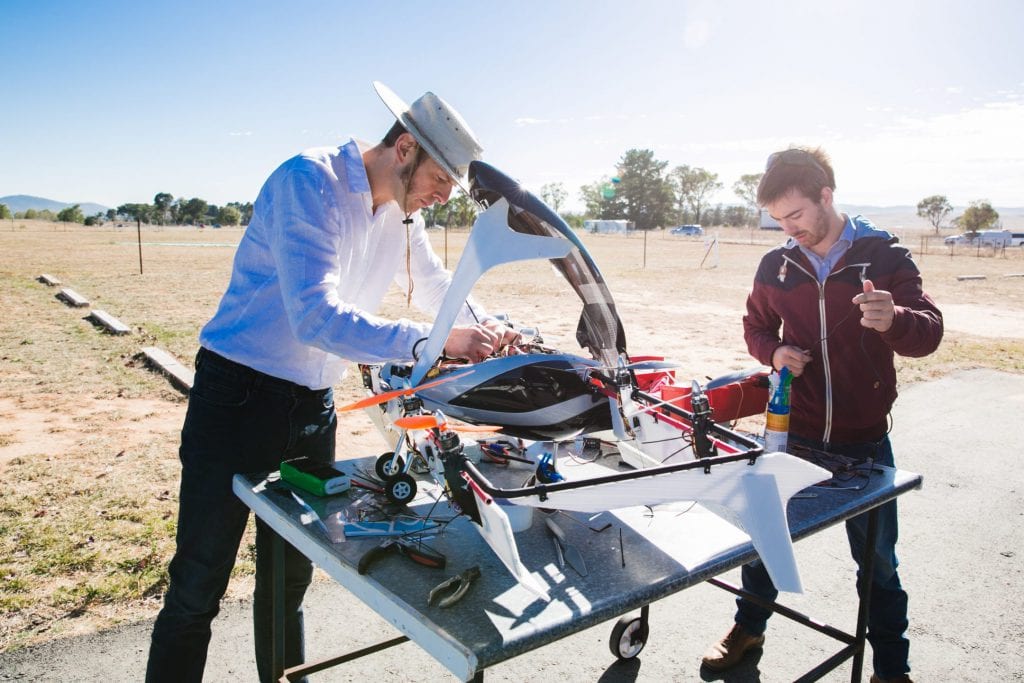
AMSL Aero co-founder Andrew Moore and John Wilson, design engineer at AMSL Aero | Source: AMSL Aero
And while the current prototype is somewhat in the rough, Moore says he is seeking a further $2 million with a view to building a full-size prototype within 12 months.
There are quite a few VTOL vehicles being developed around the world, such as by air taxis being by by Google’s Larry Page and developed by Calfornian UAV company Kittyhawk, or the eVTOL aircraft by Aurora Flight Services on behalf of Uber.
However, Moore, who has now also begun a PhD in VTOL aircraft at the University of Sydney told AFR he has patented unique features that will set the Vertiia apart from its competitors. including systems that allow a longer battery life, a flight range of up to 250 kilometres, a lightweight frame with minimal parts, and easier passenger access.
Mr Moore, who demonstrated the pilotless plane at a Canberra airfield this week, said these design features will allow a cruising speed of 300 kilometres per hour – meaning a greatly reduced air commute to the next closest city, Sydney, where it could then land on top of buildings by using proprietary tilting wings.
“The average daily commute to the Sydney CBD is 62 minutes. Even using the existing light aircraft lanes, the Vert-plane would reduce that to 15 minutes,” he said.
With a whisper-quiet electric engine, it would also more likely to be approved as a mode of public transport, Moore said.

Artist’s impression of the Vertiia | AMSL Aero
Telstra, the telco supporting the muru-D incubator, says that with the introduction of 5G networks it will be possible to support low-flying pilotless aircraft flying with secure and reliable communication and control features.
“Telstra will be able to offer the capability to support the command and control of autonomous vehicles so that the low altitude airspace, and also the broader aerospace around cities can be more safely managed for airborne technologies including drones and aerial people carriers such as the Verti-plane,” said Telstra Chief Technology Officer Hakan Eriksson.
“5G will take us not just to a world of ultra-fast mobile speeds but also the Internet of Things on a mass scale. This will bring with it enormous potential for technology enablement – from smart cities and smart homes, to drones and driverless cars, to virtual and augment reality applications.
“We are investing through muru-D in early stage technology companies that are working on solving high impact global problems, in this case the future of human transportation. It’s exciting to see this technology being built in Australia and to think about how Telstra can help enable its success both now and in the future with our network technologies.”
Moore says he founded AMSL Aero in June 2017 with a mission to ‘change the way the world travels’ by providing safe, clean, fast and affordable personal transport options – and that there is no reason manufacturing of the aircraft cannot be done in Australia.
“There are already factories in Australia making components for the prime aircraft manufacturers, so there’s no reason we can’t do it here,” he said.
However, as certain components such as batteries may need to be manufactured overseas and then imported at first, Moore estimates a further $30 million in investment will be required before the first Vertiia can go on sale.
In the meantime, the Australian Army UAS (Drone) Sub-Program has also offered to investigate the technology’s potential uses for defense operations.















